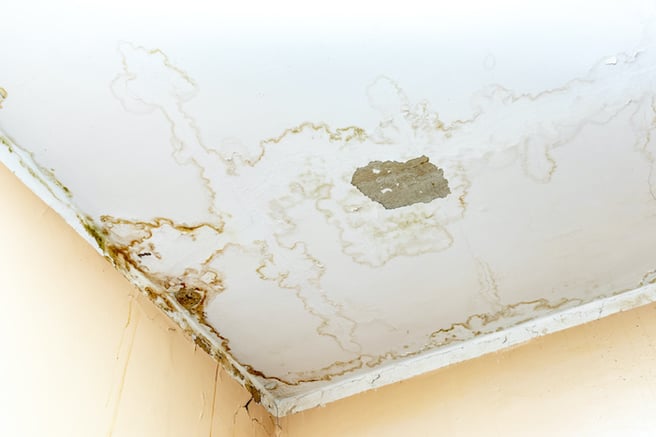Water Damage in Bathrooms
Water Damage in Bathrooms
Blog Article
Are you in search of info on How to Repair and Prevent Bathroom Water Damage??

Water damage frequently takes place in the bathroom due to the water made use of daily. Often, the damage could be a little mold from the shower. Various other times, it's huge damages on your floor. Whatever it is, it is always excellent to know the reason as well as stop it before it occurs.
This overview will certainly go through a few of the usual causes of water damage in the restroom. We will certainly likewise analyze what you can do to prevent these causes from harming your restroom. Allow's dive in.
These are the usual reasons you would have water damage in your shower rooms and also how you can find them:
Excess Wetness
It's trendy to have that long shower as well as sprinkle water while you hem and haw and act like you're carrying out, yet occasionally these acts could cause water damage to your restroom.
Sprinkling water around can trigger water to head to edges and form molds. Enjoy just how you spread out excess moisture around, and when you do it, clean it up to prevent damage.
Cracks in your wall ceramic tiles
Shower room wall surface floor tiles have been specifically created for that function. They secure the wall surface from dampness from individuals taking showers. Nonetheless, they are not undestroyable.
Occasionally, your bathroom wall tiles crack and allow some moisture to seep into the wall. This could potentially destroy the wall if you do not take any kind of activity. If you see a split on your wall surface ceramic tiles, repair it promptly. Do not wait up until it ruins your wall.
Overflowing toilets and sinks
As humans, occasionally we make blunders that might trigger some water damage in the shower room. For instance, leaving your sink faucet on can trigger overflowing and damage to other parts of the washroom with dampness.
Additionally, a malfunctioning bathroom could cause overruning. As an example, a damaged bathroom handle or other parts of the tank. When this occurs, it might damage the flooring.
As quickly as you observe an overflowing sink or toilet, call a plumbing professional to aid take care of it instantly.
Burst or Dripping Pipes
There are many pipelines lugging water to different parts of your bathroom. Some pipelines take water to the bathroom, the sink, the faucets, the shower, as well as many various other locations. They crisscross the small area of the bathroom.
Once in a while, these pipelines could obtain rustic and ruptured. Other times, human action can trigger them to leakage. When this occurs, you'll find water in the edges of your restroom or on the wall.
To identify this, watch out for gurgling wall surfaces, molds, or mold. Call a professional emergency situation plumbing to fix this when it occurs.
Roof Leakages
In some cases, the trouble of water damage to the restroom might not originate from the washroom. For example, a roof covering leak can trigger damages to the restroom ceiling. You can detect the damage done by considering the water stains on the ceiling.
If you locate water discolorations on your ceiling, check the roofing to see if it's damaged. After that, call a professional to assist address the problem.
Verdict
Water damage to your restroom can be frustrating. However, you can manage it if you prevent a few of the reasons mentioned in this overview. Call a specialist emergency plumbing professional if you notice any type of extreme damage.
How to Prevent Water Damage in Your Bathroom?
Water damage repair is an expensive, meticulous, and lengthy process. Unfortunately, bathrooms are the most susceptible rooms to water damage due to toilets, showers, and sinks. Pipes and fixtures wear out over time and are not immune to damage. But all is not lost, as there are ways to prevent water damage from occurring in your bathroom.
Check Your Plumbing
Nothing lasts forever, especially pipes, which can rust and begin leaking over time. You should periodically conduct pipe inspections and pay attention for any musty smells or water stains that may indicate you need water damage repair. Here are some things to check:
Frequently test valves for your toilet, shower, and sink to ensure they are properly working. Check faucet supply lines hidden under vanities and replace when needed. Replace cracked or deteriorating caulking along sinks, tubs, and showers. If you notice a clog in your sink, call in a professional. Since you can’t check the pipes in the wall, keep an eye out for stains, drywall bubbling, musty smells, and excess moisture; if the bathroom is on a second level, check the ceiling of the room directly below for these signs. Don’t Overwork Your Toilet
One of the most common reasons bathrooms need water damage repair is due to overflowing toilets. Save yourself the hassle of cleanup by being mindful and not pushing your toilet to extreme limits. If you have young children, it is especially important to keep an eye on them when they are in the bathroom and to teach them how to avoid clogging the toilet. Here are some more tips to help prevent your toilet from overflowing:
If you have a septic tank, only use septic-safe toilet paper Do not flush anything down the toilet besides toilet paper; items like diapers and sanitary napkins will clog the piping Pay attention to your toilet’s water level: If it’s low, it could mean it is partially clogged or that there is a crack in the toilet bowl https://www.alure.com/home-improvements-blog/resources/how-to-prevent-water-damage-in-your-bathroom

I discovered that post on How to Repair and Prevent Bathroom Water Damage? while looking around the search engines. Sharing is caring. You never know, you might be doing someone a favor. Thanks a lot for going through it.
Book 24/7 Report this page